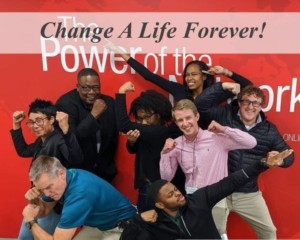Blended Restarts: Everything is Different Now
The only difference between a good school and a bad school is everything.
I thought of this maxim, draw from work with 800 struggling schools, this morning on a 5am call about school improvement. When you compare the attributes of a No-Excuses high schools (Aspire, Alliance, Green Dot, KIPP, IDEA, Uplift, Summit to name a few) with a big struggling urban schools, everything is different: expectations, culture, curriculum and course-taking patterns, community connections, structures for personalization, staffing patterns, teacher skill levels, support services, schedule of the day and year. It’s the difference between coherence—everything works together for teachers and students—and dysfunction.
My involvement with school improvement is why New School Venture Fund asked me to speak about failure at their recent conference. Because there are so many dimensions of change, particularly at the secondary level, school improvement is really difficult and politically charged. It takes strong leadership, deep capacity, and focused project management—three things that are difficult for a school district to muster. Even big federal investment in school improvement there are still only a few scaled providers (like America’s Choice) that states and districts can turn to for help.
Success comes down to two factors: set up and execution. By ‘set-up’ I mean the initial changes in conditions that attempt to sufficiently disrupts old structures and behavior patterns. By ‘execution’ I mean the daily and hourly fidelity to an instructional model. As a result of a new set-up and improved execution, school improvement should result in a (relatively) quick and uniform improvement in the quality of teaching and learning classroom to classroom.
The ideal set-up is a restart—conditions close to new charter school development; anything less is a compromise that will make the set-up less effective and will bound improvement potential.
Blended learning is a shift to an online environment for at least a portion of the day to boost learning and operating productivity. I’m enthusiastic about the potential of blended learning in school improvement (and first wrote about blended restarts in 2009) because it has the potential to 1) offer a comprehensive online curriculum delivered with consistent quality, 2) leverage master teachers across a larger number of students, 3) utilize remote teacher in hard to staff subjects/services, and 4) expand the number of high capacity providers (like Connections Learning) supporting restarts.
School improvement will remain a challenge, but selectively incorporating online learning into improvement plans can make it easier to staff a struggling school and a strategy for ensuring consistent quality of teaching and learning. Don Henley summarizes the goal of school improvement, Everything is different now.
For more:
- It’s interesting to note that Walton Family Foundation has added school improvement (and public policy) to it’s historical support for charter schools with a geo focus on “Market Share Demonstration Sites” including Albany, Denver, East and South Los Angeles, Milwaukee, New Orleans, Newark and Washington, D.C.
discl: Learn Capital has a commercial relationship with Pearson, the parent company of America’s Choice. Connections is an advocacy partner.








Bill Barnes
As a leader in mathematics education, It occurs to me that the online content for mathematics curriculum is underdeveloped. I like the idea of bringing the end-users into play for the development of curriculum resources. Everyone should have access to the development of critical thinking and conceptual understanding of mathematics...not just a series of "how-to" resources that solidify our position as 25th in the world. How do we level the playing field?...by "incentivizing" contribution to a user-develop (teachers, students, mathematicians, everyone) curriculum resources designed to promote innovation and design....in a social networking environment. (user-rating systems, comments, etc) These ideas could flatten the educational world and provide the access that Vander Ark shares above. I have shared this vision at national conferences, local policy meeting, etc...while everyone gets excited, no one possesses resources (or I;m looking in the wrong places) to make it happen. Looking for someone to connect these ideas with. @billjbarnes [email protected]
Replies
Tom Vander Ark
I'm enthusiastic about web2 math content (eg ManagHigh) but probably more skeptical than you about user generated content